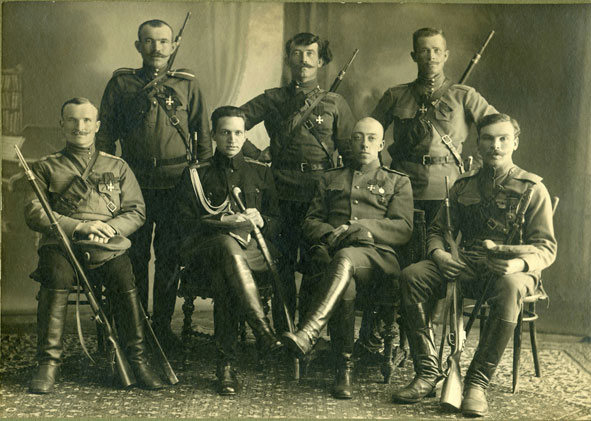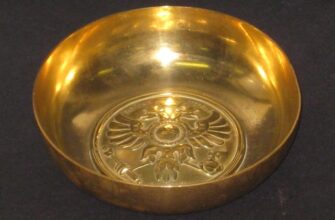From this legendary partisan detachment began the history of modern Russian special forces over 100 years ago during the First World War. More precisely with the letter of lieutenant Leonid Punin to the command of Western Front with the proposal on the establishment of partisan groups for raids in the rear of the Germans. Command approved the idea and on 21 October 1915 a decree was given on the formation of the group.
Ataman Punin’s troop of special importance was established on November 26, 1915. At creation time it was called a troop of special importance of Staff of the Northern Front, now a known name was got in March 1917, after the death of ataman on 1 September 1916 during one of the operations. In September 1917, nearly half of the lower ranks and officers left the troop, but it remained at the front. And since 1918 troop was part of the Red Army, where it became the first troop of special purpose. It existed until the summer, when it was disbanded.
The troop consisted of 11 officers and 17 sergeant and non-commissioned officers, 296 Cossacks and soldiers, more than half of whom were Knights of St. George. With ataman his two brothers served – Lev and Alexander. Troop worked on the Northern Front, and was part of the 12th Army, and its headquarters was located in the Old Kemmern (now Kemeri, Latvia).
On December 7, 2016 at the Museum-Reserve Tsarskoye Selo, an exhibition open “Ataman Punin’s troop of special importance. 1915-1917”. The exposition will be opened until February 26, 2017. Opening of the exhibition was timed to the 101th anniversary of the creation of the troop and to the Day of the Knights of St. George, which was celebrated in the Russian Empire on November 26 (New Style 7 December).
The exposition is based on documents from the archives of Olga Khoroshilova – great-niece of ataman, granddaughter of his brother Lev Punin.The exhibition features photographs, drawings and diagrams of enemy positions, newspapers and magazines of those years with the articles about the troop, personal belongings of Lev Punin, weapons of the First World War, which were exposed by the museum.

More information about the exhibition and the troop Olga Khoroshilova told to editorial of cultural and political magazine “E Vesti”:
EV: What was the special importance of Punin’s troop?
Khoroshilova O.A.: “Special importance” – is its special work. The troop had several important tasks – to protect the railway from the station Old Kemmern to Riga (now – Latvia), to carry out reconnaissance, including on the territory occupied by German troops, to find out their exact location (which would be very important to prepare for the future of our offensive), to control movement of the Germans. But the most important, for what ataman Punin’s troop was sent to the area of the Old Kemmern (an extended section of Riga front) – is to carry out a raid to the rear of the Germans. However, it failed to do so – it was no opportunity, and the command did not want to risk this troop.
EV: Did confusion and vacillation in the army during the First World War touch the troop? Does its fate typical for its time?
Khoroshilova O.A.: Confusion and vacillation in the units of the Russian army began nevertheless already during the February Revolution and after it, that is in the early spring of 1917. But even before these events, and during the Revolution Punin’s troop remained the most combat-ready unit. It was in good standing with the Provisional Government. It was personally patronized by the Minister of War Alexander Guchkov. In May 1917, Alexander Kerensky, the new military and marine minister, issued an order to dismantle almost all units of special importance. He needed a loyal regular cavalry, the partisans also considered to be very dangerous, because they are difficult to be controlled. Kerensky believed that they could turn into a political weapon directed against the new government and himself in particular… At the front remained unit – including the troop of ataman Punin, which continued to be on an extended section of front near the station Old Kemmern. At that difficult time partisans of ataman Punin often carried out functions of field gendarmerie. For example, part of the troop pacified the Russian regiments of the 180th Infantry Division in July 1917.
EV: Please, tell me, how it was possible to save your archive? Your family has managed to save a decent amount of relics.
Khoroshilova O.A.: First archive was carefully preserved by my grandfather Lev Punin, then by his wife, my grandmother, Olga Nikolaevna, who died in 1984. My father gave it to me. And, as time has shown, he did the right thing.
EV: Your family – a family of historians. Did the archive affect on your choice of your profession?
Khoroshilova O.A.: Affected, but not on the choice of profession, by on my interests. First, I became interested in my family history. In my hands was a grandfather’s archive and several photo albums, which I began to study slowly and very carefully. Then I came across another part of the archive of ataman Punin’s troop. I started looking for the descendants of those officers who served under Leonid Punin. In ten years, I have accumulated a very significant volume and very interesting in content material. A large number of documents have been found, not only in the Russian archives (RSMHA, RSMA), but also in foreign. As a result, based on the collected files and documents I was able to publish two books devoted to troops of special importance of the First World War and the troop of ataman Punin in particular.
EV: Which exhibits are particularly valuable?
Khoroshilova O.A.: Submitted materials are valuable from a historical perspective. Because pictures almost did not survive of troops of special importance of the First World War period. At the exhibition you can see partisans – officers and lower ranks of the ataman Punin’s troop, and how they fought with the Germans, and how spending free time. There is even a photograph on which partisans take food – they stand at the field kitchen with a soldier’s bowlers. I and the curator of the exhibition Ekaterina Shvigleva, for whom I am very grateful for the excellent work in organizing this project, were able to show troop of ataman Punin like in the volume – and the military work, and leisure, and daily activities. In addition to photos, the exhibition presents the newspaper articles about the troop in 1916-1917, pictures of ataman Punin, drawings German positions, also made by him. There are some personal things of ataman and my grandfather Lev Punin.
Source: Tsarskoye Selo




